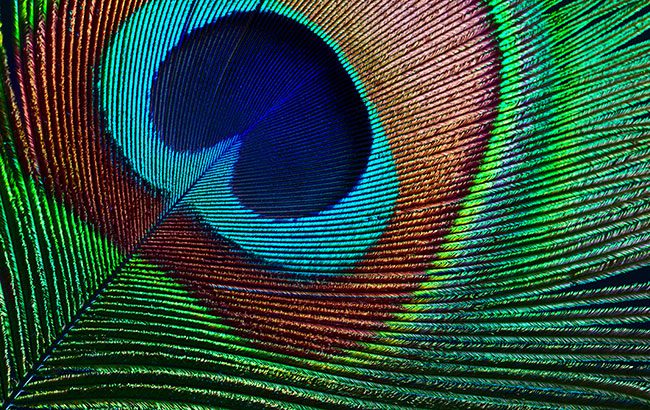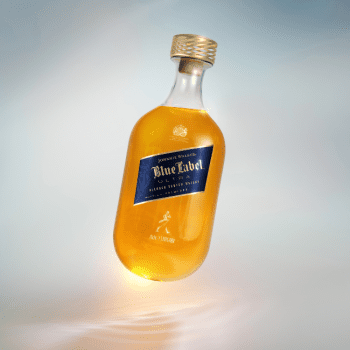Light as a feather – but are there packaging risks?
By Ted SimmonsSpirits brands focused on sustainability are producing lighter bottles and packaging. But what are the cost implications and how do you mitigate the risk of damages?

*This feature was originally published in the December 2024 issue of The Spirits Business magazine.
When it comes to packaging, there is a perception that heavier glass connotes quality. The way a bottle looks and feels can have significant consumer impact. But as brands strive for more sustainable practices, some are reassessing that belief, rolling out lighter bottles that use less glass, and reduce CO2 emissions and carbon footprints.
“You want to stand taller than your competitors. You want to look massive, because there is this perception that weight is equal to quality,” says Eric Sampers, global marketing director for Brockmans Gin. “When you’re buying a more premium spirit, you expect a more premium package, and part of that has been wrongly addressed as heavy glass.”
Brockmans is among a handful of spirits producers hoping to change the conversation. In August, the B Corp-certified brand introduced a bottle containing 30% less glass on average than its competitors. Weighing 500g, it is part of a new wave of packaging that seeks to balance sustainability and luxury. “It’s got a very modern and edgy design compared with the previous one, so consumers are not going to feel like they’re missing something or they’re losing something, and that’s the beauty of that project,” says Sampers. “We didn’t have to sacrifice anything to design it.”
The new Brockmans bottle will hit shelves in early 2025 across the brand’s portfolio. For larger companies with similar ambitions, these initiatives are proving harder to scale, though progress continues to be made.
In September, Diageo introduced the world’s lightest whisky bottle, its Johnnie Walker Blue Label Ultra, weighing just 180g. Only 888 bottles were produced, to be released in 2025. The technology used to slim down the bottle is not yet available on a larger scale, though Diageo has made its UK patent royalty-free to license.
Luxury in simplicity
Jeremy Lindley, the global design director who oversaw the Blue Label Ultra bottle, says Diageo is exploring reducing the weight of its glass throughout the company portfolio. In general, with all else equal, a reduction of 1g of glass equates to more than half a gram less of carbon emissions produced during production. “Slowly, we’re seeing that consumers acknowledge the luxury in the simplicity,” Lindley says. He adds that the Ultra bottles are hand-blown and time-intensive to make, which makes scalability unrealistic at the moment.
However, Diageo is already taking lessons from the project and applying them elsewhere. “We’ve found that the shoulders in glass bottles hold the most weight, so with a slight bottle redesign, we could reduce the weight by quite a large margin,” he adds.
In October, Pernod Ricard unveiled a new bottle for Chivas Regal 18-year-old that was 25% lighter. The redesign, which features a taller silhouette, is expected to save more than 500 tonnes of glass annually, based on fiscal 2024 volume sales.
“Lighter packaging reduces resource use and waste, which has a flow-on benefit in overall emissions expenditure, without sacrificing the premium quality and experience our consumers expect,” says Sandrine Ricard, director of sustainability and responsibility communications at Pernod Ricard.
“As sustainability becomes more of a priority, consumers are increasingly aware that true value lies not just in the physical weight of the bottle, but in the quality of the liquid within and the brand’s commitment to environmental responsibility at large.”
From a production standpoint, manufacturing lighter glass releases fewer carbon emissions, but there are added benefits to slimmer packaging. Lighter bottles mean lighter cases, which means more product can be packed onto trucks, which means fewer trucks or trips are needed.
“If the industry was [broadly] going to go with lightweight glass bottles, that’s much less glass weight that is carried around during logistics, transportation and in travel retail,” Sampers says. “It’s quite incredible, the amount of weight that we would save, and the amount of CO2 that we would save throughout the life stage of the product.”

Montana Whiskey Company uses an aluminium bottle rather than a glass one, but those same concepts of weight as it pertains to efficiency and transportation apply.
“One case of our whiskey weighs 24 pounds [10.9kg], versus 36 for an equivalent case of glass, and it’s a more compact size,” founder Todd Berg says. “Most glass products, you could only ship approximately 60 cases per pallet. We ship 105. So our cost per shipping and the carbon footprint per bottle is far smaller when you’re more efficient in your shipping.”
Less risk of breakages
One benefit of thick glass is that while it is heavier to transport, there is less risk of breakages. Sampers says that during the process of creating the lighter Brockmans bottle, advanced software was used to determine just how thin the walls could be.
“Very subtle adjustments were made, thanks to the software, to really maximise how tall and how wide the bottle could be without becoming fragile,” he says. “There was a bit of back-and-forth trying to make it as tall and wide as possible so that our bottle wouldn’t look skinny compared with the competition. That’s really the only challenge we faced.”
More so than breakages, product development and scalability seem to be the biggest challenges in bringing lighter glass to a wider audience.
“Producing a lighter bottle brings more opportunities than challenges,” Ricard says, “but there is, naturally, some investment required upfront in redesigning and testing to ensure the bottle maintains its strength.”
Sampers says the product design took roughly nine months in total, describing it as a smooth ride. There were some nerves when the new design hit the bottling line, he says, because the bottles inevitably bump into one another, but no major issues arose.
“It’s pure benefit, really, from our perspective,” he says of the new glass. “I’d put money that consumers won’t see anything negative out of these.”
Industry insights
How does bottle weight play a role in spirits sustainability with regards to manufacturing and transportation?
Richard Ryan—co-founder, Drinksology Kirker Greer
“Opting for lighter glass bottles requires less glass raw material and less energy to heat and shape the glass in the metal moulds. The mindset of adopting lighter glass often goes hand-in-hand with the choice of glass raw material. ‘Wild Glass’ by Estal is a recent example of how a glass manufacturer can offer up light weight bottles combined with post-consumer recycled glass as a more sustainable raw material. At Kirker Greer we are adopting this bottle range for our upcoming Del Suelo Mezcal.
“If we look at transportation, lighter bottles decrease the overall weight of shipments, leading to lower fuel consumption during transportation. This applies to every stage, from shipping raw materials, shipping and distributing finished products. Lighter bottles often allow for a smaller silhouette and more efficient packing, enabling more products to be transported in a single shipment, further reducing transportation emissions.”
Related news
Paradiso Sustainability Summit rebrands
